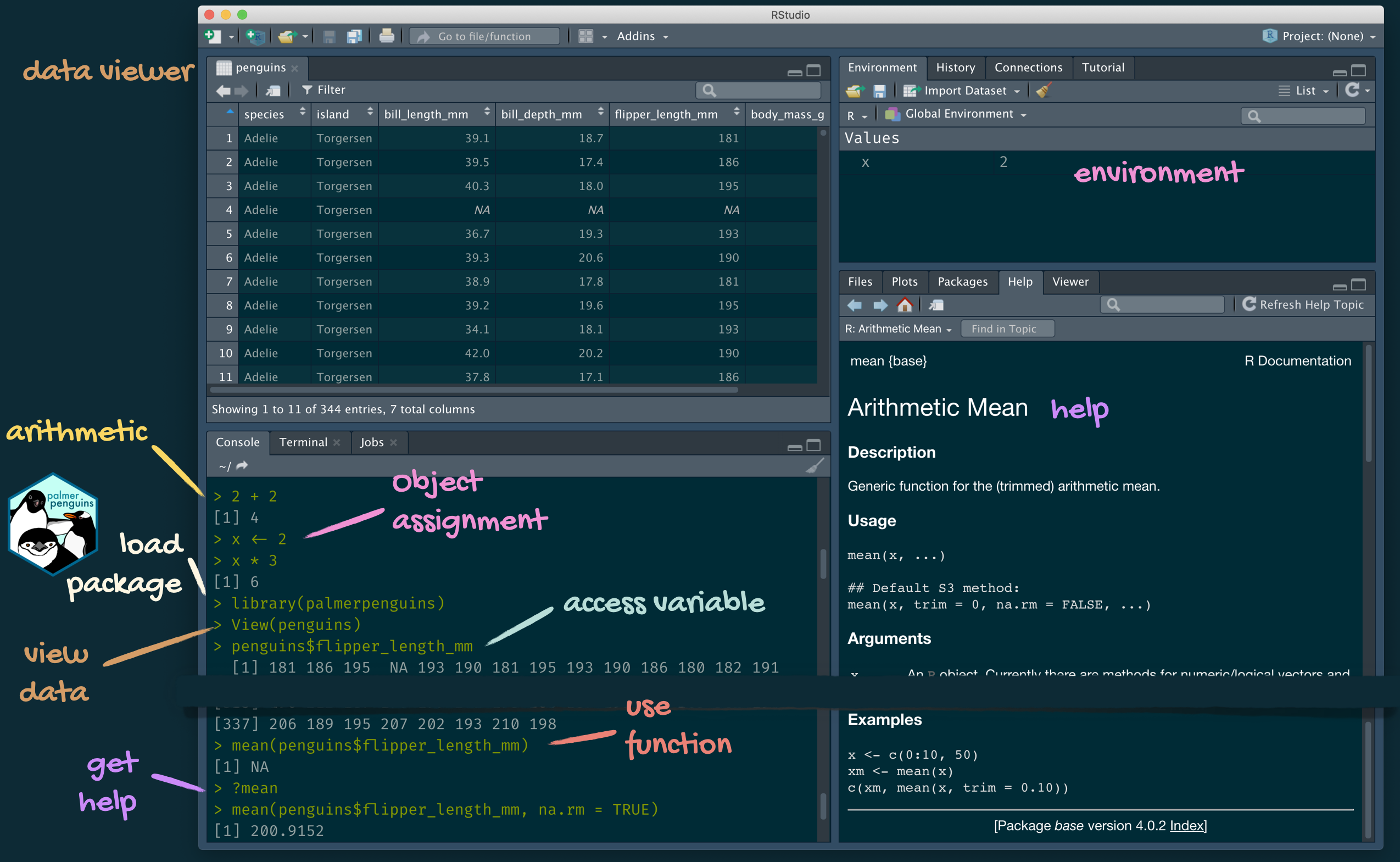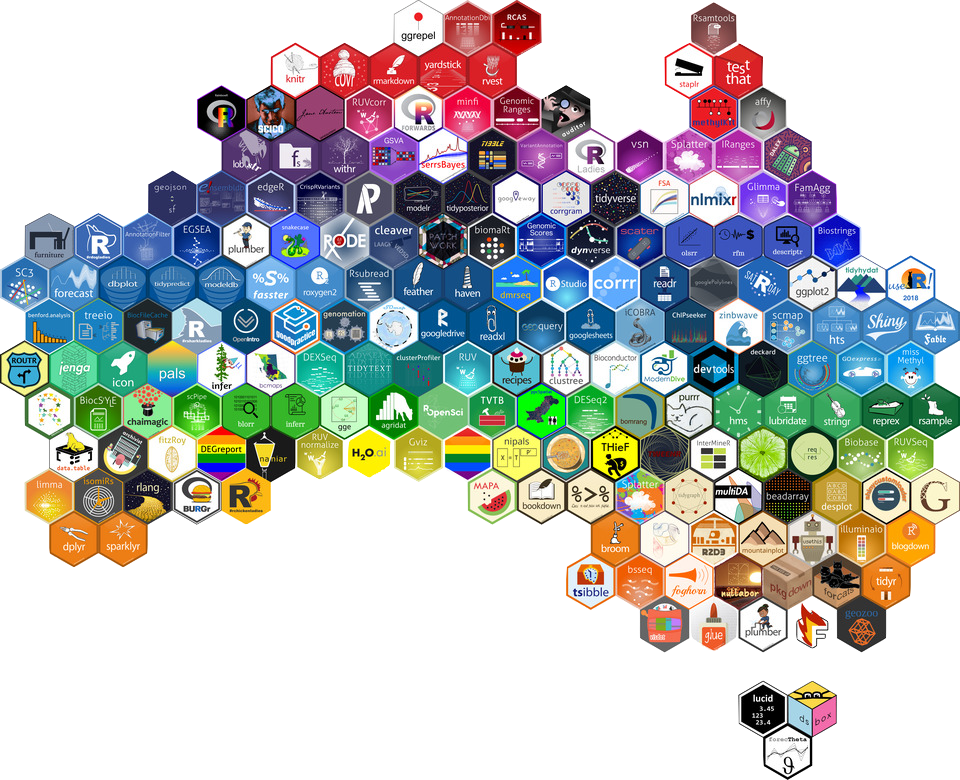Course toolkit
Course operation
- introds.org
- Learn
- Zoom
- Teams
- Piazza
Doing data science
- Programming:
- R
- RStudio
- tidyverse
- R Markdown
- Version control and collaboration:
- Git
- GitHub
Learning goals
By the end of the course, you will be able to...
- gain insight from data
Learning goals
By the end of the course, you will be able to...
- gain insight from data
- gain insight from data, reproducibly
Learning goals
By the end of the course, you will be able to...
- gain insight from data
- gain insight from data, reproducibly
- gain insight from data, reproducibly, using modern programming tools and techniques
Learning goals
By the end of the course, you will be able to...
- gain insight from data
- gain insight from data, reproducibly
- gain insight from data, reproducibly, using modern programming tools and techniques
- gain insight from data, reproducibly and collaboratively, using modern programming tools and techniques
Learning goals
By the end of the course, you will be able to...
- gain insight from data
- gain insight from data, reproducibly
- gain insight from data, reproducibly, using modern programming tools and techniques
- gain insight from data, reproducibly and collaboratively, using modern programming tools and techniques
- gain insight from data, reproducibly (with literate programming and version control) and collaboratively, using modern programming tools and techniques
Reproducibility checklist
What does it mean for a data analysis to be "reproducible"?
Reproducibility checklist
What does it mean for a data analysis to be "reproducible"?
Near-term goals:
- Are the tables and figures reproducible from the code and data?
- Does the code actually do what you think it does?
- In addition to what was done, is it clear why it was done?
Long-term goals:
- Can the code be used for other data?
- Can you extend the code to do other things?
Toolkit for reproducibility
- Scriptability → R
- Literate programming (code, narrative, output in one place) → R Markdown
- Version control → Git / GitHub
R and RStudio

- R is an open-source statistical programming language
- R is also an environment for statistical computing and graphics
- It's easily extensible with packages

- RStudio is a convenient interface for R called an IDE (integrated development environment), e.g. "I write R code in the RStudio IDE"
- RStudio is not a requirement for programming with R, but it's very commonly used by R programmers and data scientists
R packages
Packages are the fundamental units of reproducible R code. They include reusable R functions, the documentation that describes how to use them, and sample data1
As of September 2020, there are over 16,000 R packages available on CRAN (the Comprehensive R Archive Network)2
We're going to work with a small (but important) subset of these!
1 Wickham and Bryan, R Packages.
A short list (for now) of R essentials
- Functions are (most often) verbs, followed by what they will be applied to in parentheses:
do_this(to_this)do_that(to_this, to_that, with_those)A short list (for now) of R essentials
- Functions are (most often) verbs, followed by what they will be applied to in parentheses:
do_this(to_this)do_that(to_this, to_that, with_those)- Packages are installed with the
install.packagesfunction and loaded with thelibraryfunction, once per session:
install.packages("package_name")library(package_name)R essentials (continued)
- Columns (variables) in data frames are accessed with
$:
dataframe$var_nameR essentials (continued)
- Columns (variables) in data frames are accessed with
$:
dataframe$var_name- Object documentation can be accessed with
?
?meantidyverse

- The tidyverse is an opinionated collection of R packages designed for data science
- All packages share an underlying philosophy and a common grammar
rmarkdown
- rmarkdown and the various packages that support it enable R users to write their code and prose in reproducible computational documents
- We will generally refer to R Markdown documents (with
.Rmdextension), e.g. "Do this in your R Markdown document" and rarely discuss loading the rmarkdown package

R Markdown
- Fully reproducible reports -- each time you knit the analysis is ran from the beginning
- Simple markdown syntax for text
- Code goes in chunks, defined by three backticks, narrative goes outside of chunks
Environments
The environment of your R Markdown document is separate from the Console!
Remember this, and expect it to bite you a few times as you're learning to work with R Markdown!
Environments
First, run the following in the console
x <- 2x * 3All looks good, eh?
Environments
First, run the following in the console
x <- 2x * 3All looks good, eh?
Then, add the following in an R chunk in your R Markdown document
x * 3What happens? Why the error?
R Markdown help
R Markdown Cheat SheetHelp -> Cheatsheets

Markdown Quick ReferenceHelp -> Markdown Quick Reference

How will we use R Markdown?
- Every assignment / report / project / etc. is an R Markdown document
- You'll always have a template R Markdown document to start with
- The amount of scaffolding in the template will decrease over the semester
Your turn: AE 02 - Bechdel + R Markdown
- The Bechdel test asks whether a work of fiction features at least two women who talk to each other about something other than a man, and there must be two women named characters.
- Go to RStudio Cloud and start the assignment
AE 02 - Bechdel + R Markdown. - Open and knit the R Markdown document
bechdel.Rmd, review the document, and fill in the blanks.


